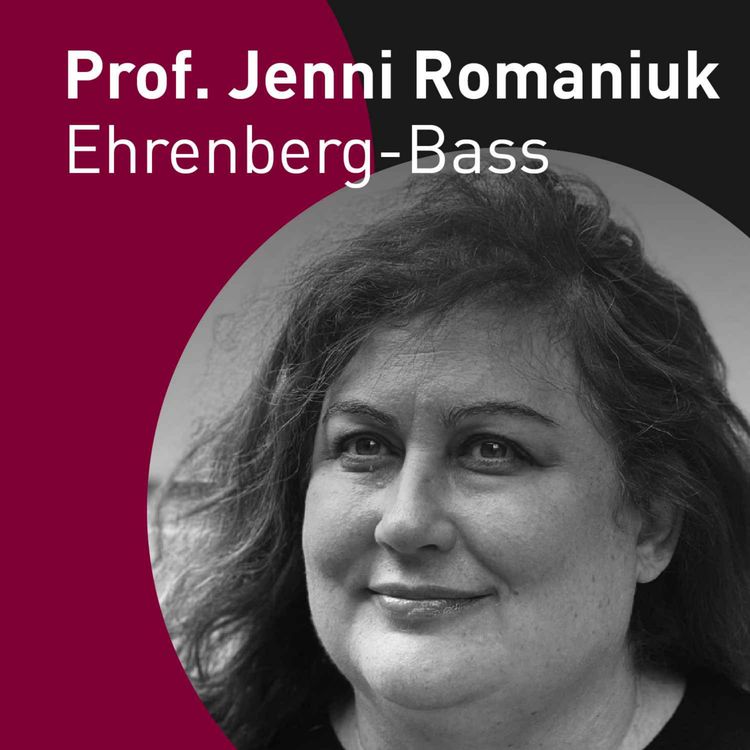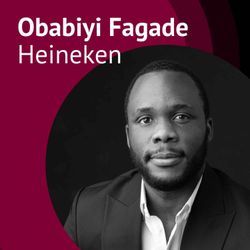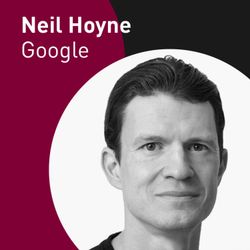Share

Branding over Wine
Why Don’t Brands Grow According to Plan? – Research Insights
Ep. 10
•
“If you have fuzzy definitions, you can’t measure them. And therefore, you can’t say if you’re right or not.”
World-renowned research professor Jenni Romaniuk of the Ehrenberg-Bass Institute of Marketing Science underlines why growth doesn’t always match the plan and what areas to focus on when following brand growth: the customer base, non-buyers, availability, category entry points, and more:
- Why physical availability is more than just distribution;
- Light buyers, non-buyers, and penetration;
- Category entry points and the 7Ws;
- How to grow new brands;
- The truth about consistency.
“It doesn’t actually matter what you plan to do. If you grow, [by penetration] is how it will happen.”
— Jenni Romaniuk
More episodes
View all episodes

14. Heineken: Stay a Local Global Brand by Facilitating, Not Dictating
36:21||Ep. 14“Heineken is called ‘The Chairman’ in Nigeria. So, we give that flexibility to Nigeria to call it ‘The Chairman’, but we do not need to create a global campaign saying the ‘Chairman’ from Amsterdam. . . . We give that flexibility. That's how we operate. Have a central idea, but give local flexibility to the markets.”As a global beer brand, Heineken promotes a spirit of open-mindedness, framing its drinkers as global citizens who respect other cultures while still reveling in the comforts of their own. In this episode of Branding Over Wine, Obabiyi Fagade, commercial development manager of global brands at Heineken, shares how the iconic Dutch beer brand cultivates this flexible yet consistent brand identity in 190 different countries all over the world. Here, Obabiyi reveals that Heineken’s identity in Northern Europe is actually quite different from its identity in Nigeria, which are both quite different from the one in the US. Rather than view this as inconsistency within the brand, Heineken embraces it as a reflection of its open-minded, progressive nature. So, for Heineken’s 150th anniversary, they ran a campaign celebrating its shifting identity in different eras and regions. Ultimately, the local diversity within the brand still points to its established—and beloved—global identity. Listen in for universal insights on the power of local cultures to diversify and grow global brands here.
13. Business-to-Human: Keeping People at the Heart of Tech Branding
42:01||Ep. 13“We often categorize our worlds as B2B or B2C. To cut to the center, we should say that all the work we’re doing is really B2H–business to human. If you put the human being in the center, suddenly you have an organizing principle to say, ‘How do I create a connection with the human on the other side of this? How do I surprise and delight, and even build community?’” – Jim MisenerAs technology becomes increasingly ‘invisible’ and internal within products, brands create the contours that allow us to connect and understand those products. In this Branding Over Wine podcast episode, Jim Misener, president at the agency 50,000feet, reminds us that the genesis of brands was to help people move through the world. And as our world trends towards tech, brands will play a vital role in helping us navigate and understand it. Branding for technology doesn’t mean putting it over people. Whether for B2B or B2C, brands function as a means to connect people to products. In that sense, no matter your brand, it’s all B2H. Listen to this conversation to learn more about how to keep humans at the center of your technology branding.
12. Franchising Creativity with McDonald's Global CCO @ DDB
28:43||Ep. 12“Technology is the great equalizer, but Poetry (the intangible benefits of creativity) is what really makes a difference.”McDonald's Global CCO @ DDB, Luis Miguel Messianu, named Legend Honoree by ADCOLOR and part of CMC’s Advertising Hall of Fame, is the one who oversees the creative output of the McDonald’s brand across all of its 46 markets. And, as part of his role, he’s now building a unique internal infrastructure for sharing creative ideas globally throughout the DDB network.In our conversation with Luis Miguel, he tells us about:What it means to manage creativity on a global scale and how to make it more efficient;Increasing the potential of local ideas – ”franchising creativity” as he likes to call it – and the importance of sharing, learning, and scaling;McDonald’s internal “candy store” – a platform full of pre-prepared, never-implemented ideas (and materials) for creatives worldwide to consider bringing to life in other, more suitable markets;Avoiding the “not invented here” syndrome;Ronald McDonald using the metaverse for good.“At the end of the day, it’s the human factor – it’s the poetry and the emotional connection – that works harder on behalf of the brand, and provides a benefit for the audience.” – Luis Miguel Messianu @ DDB
11. How to Build a Meaningful Power Brand
34:18||Ep. 11“Strong brands are not made by accident. They are made by design.” – Kris MichielsListen to Unilever’s brand, marketing, and communication director, Kris Michiels, on how strong brands are created. He argues that the essence of our job as brand leaders and marketeers is strengthening brands from the core – and he suggests how you can start, diving into: Kantar’s Brand Power modelUnilever’s new marketing philosophyThe best approach to data The correlation between purpose, brand power, and brand growthHellmann’s – should a mayonnaise product have a brand purpose?
9. Why Are Scandinavian Brands so Successful?
36:17||Ep. 9“Some of the values of these companies are also something that speaks to a lot of people.”Digge Zetterberg, Frontify’s head of communications, talks about what makes Scandinavian brands so successful – from the relationship between brands and societal values to democratizing products, and everything in between:Scandinavian values and egalitarianism;Democratic design and cross-team collaboration;Sociocultural differences inside and between countries;Examples from IKEA, H&M, and others.“A lot of these [Scandinavian] brands and a lot of these companies are very good at [cross-team collaboration].”— Digge Zetterberg
8. What Is Foresight and What Is Its Function for the Brand?
39:37||Ep. 8“How could your business build a strategy, a plan, or even a product to help you prepare for how those consumer needs might be met in that distant future?”Mars Wrigley’s Joanna Lepore peeks into the future through foresight – a careful combination of creativity and science, that mixes strategy, marketing, and insights – to imagine relevant and objective outlooks for her organization:What foresight is and how it complements other inside functions;How foresight looks at business models;Methodologies and the 3 phases of foresight;Examples from Mars Wrigley brands and the new M&M's Munchums;“It [foresight] delivers you provocation, exploration, tools, and methodologies to make your existing strategy or plan more robust.” — Joanna Lepore
7. Why Brands Need Long-Term Commitment to Building Credibility
31:32||Ep. 7“You have to stay in business – and you not only have to stay in business, but you have to be profitable. Otherwise, you lose your capacity to help.”The famous David Aaker, Vice-Chairman of Prophet and Prof. Emeritus of Marketing Strategy at the Berkeley-Haas School of Business, reflects on disruptive innovation and the imperative of building brand credibility. From the evolved equity model to brand stories – an insightful guide for modern brand building:How loyalty changed the game and its part in branding;The role of brands in society and how to attain authenticity;Learnings from Goldman Sachs, Barclays, and Buoy Soap;and more“With image and awareness, advertising can handle it. But when you put in brand loyalty, everything changes.” — David Aaker
6. How to Data-Drive Your Way to Customers’ Hearts
36:04||Ep. 6Google’s chief measurement strategist, Neil Hoyne, brings clarity to how data and marketing come together; what and how to measure; moving beyond a single transaction; embracing human nature; and more.“Are we growing the value of that relationship? Yes! Then both branding and performance are tools. Their order [in terms of time sequence] matters much less here,” he explains, bringing concrete examples and spot-on metaphors that outline a solid course of action for marketers everywhere:Marketing accountability – a prime industry issue;Branding vs. performance marketing;Improving the customer lifetime value;Human behavior and the effect on trust;and more“Consumers have a little bit less trust when everybody is saying that a product is perfect.” — Neil Hoyne